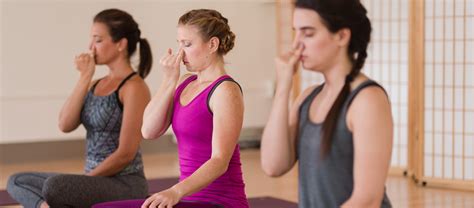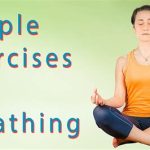Unlocking the Secrets of Yoga Breathing: A Comprehensive Guide to Pranayama for Mind and Body
Yoga breathing, or pranayama, is a fundamental aspect of the yogic practice that goes beyond physical postures, guiding practitioners toward mental clarity, physical health, and spiritual balance. In this article, we will explore the key concepts, historical significance, and practical applications of yoga breathing. We’ll also provide actionable guidelines and address common misconceptions, ensuring that both beginners and experienced practitioners can deepen their understanding and harness the full benefits of pranayama.
Introduction
Yoga breathing, or pranayama, is more than just an exercise in controlling one’s breath. It is a transformative practice that influences not only the respiratory system but also the mind and spirit. Through the conscious manipulation of breath, pranayama can help alleviate stress, improve focus, enhance physical health, and promote a deeper connection between the body and mind. This article provides an in-depth look at pranayama, unpacking its historical roots, current relevance, and practical benefits for modern lifestyles.
Key Concepts of Yoga Breathing (Pranayama)
At the heart of yoga breathing are several core concepts that shape how the practice works. Understanding these concepts is essential for anyone seeking to fully engage with pranayama:
- Prana – Often referred to as “life force” or “vital energy,” prana is believed to flow through all living beings. In yoga, controlling prana through breath can influence both physical and mental well-being.
- Apana – Apana refers to the downward flow of energy, responsible for elimination and purification. Balancing prana and apana is a key goal of pranayama.
- Nadi – In yogic philosophy, nadis are channels through which prana flows. Blockages in these nadis can lead to physical and mental imbalances.
- Kumbhaka – Kumbhaka is the retention of breath during pranayama. It is considered essential for achieving deeper states of meditation and concentration.
- Bandhas – These are body locks used to channel prana in specific ways, enhancing the effectiveness of pranayama practices.
Historical Context
The origins of pranayama can be traced back thousands of years to ancient India, where it was developed as part of the yogic tradition. Historical texts such as the Yoga Sutras of Patanjali, the Hatha Yoga Pradipika, and the Bhagavad Gita provide detailed instructions on pranayama, highlighting its spiritual significance. In these early texts, pranayama is portrayed as a means to control the mind and access higher states of consciousness. Over the centuries, pranayama has evolved, with different schools of yoga emphasizing various techniques.
Current State Analysis
In today’s fast-paced world, pranayama has gained immense popularity as a tool for managing stress, improving focus, and enhancing overall health. Scientific research has begun to back up many of the claims traditionally made about pranayama’s benefits. Studies have shown that regular pranayama practice can lower blood pressure, increase lung capacity, improve heart health, and reduce symptoms of anxiety and depression.
Practical Applications of Yoga Breathing
Yoga breathing can be incorporated into daily life in various ways, offering practical benefits for both mental and physical health. Here are some common pranayama techniques and their applications:
| Technique | Benefits | How to Practice |
|---|---|---|
| Ujjayi Breath | Calms the mind, improves focus, promotes relaxation. | Inhale and exhale deeply through the nose while slightly constricting the throat to create an ocean-like sound. |
| Nadi Shodhana | Balances the nervous system, improves focus, reduces stress. | Alternate breathing through one nostril at a time, closing the opposite nostril with your fingers. |
| Kapalabhati | Cleanses the lungs, energizes the body, improves digestion. | Exhale forcefully through the nose while pulling the navel towards the spine; allow passive inhalation between breaths. |
| Bhramari Breath | Relieves stress, promotes mental clarity, calms the mind. | Inhale deeply and hum while exhaling, focusing on the vibration in the head and face. |
| Simhasana (Lion’s Breath) | Releases tension, strengthens the throat and voice. | Inhale deeply, then exhale forcefully while opening the mouth wide, sticking out the tongue, and roaring like a lion. |
Case Studies: How Yoga Breathing Has Helped Real People
Yoga breathing has proven beneficial across a variety of fields, from athletics to mental health. Below are some case studies illustrating the impact of pranayama:
- A professional athlete used pranayama techniques to improve lung capacity and endurance, leading to enhanced performance in high-altitude conditions.
- A corporate executive suffering from chronic stress and anxiety found relief through regular practice of Nadi Shodhana, improving both focus and emotional balance.
- A woman recovering from a respiratory illness was able to accelerate her recovery through the consistent practice of Kapalabhati, which helped clear her lungs and improve oxygen circulation.
Stakeholder Analysis
Pranayama affects a wide range of stakeholders, each with unique interests:
- Yoga Practitioners – Seek to enhance their practice and mental well-being through pranayama.
- Healthcare Providers – Interested in using pranayama as a complementary therapy for conditions like anxiety, hypertension, and respiratory issues.
- Scientific Community – Focuses on investigating the physiological effects of pranayama to validate its benefits through evidence-based research.
- Corporate Employers – See pranayama as a tool for improving employee well-being and productivity.
Implementation Guidelines
For those looking to incorporate yoga breathing into their daily routine, here are some practical tips:
- Start Slowly – Begin with just a few minutes of pranayama each day, gradually increasing the time as your comfort with the practice grows.
- Focus on Technique – Proper technique is essential to receiving the full benefits of pranayama. Consider working with an experienced yoga teacher if possible.
- Create a Routine – Consistency is key to success in pranayama. Aim to practice at the same time each day, preferably in a quiet, peaceful environment.
- Listen to Your Body – If you experience discomfort or dizziness during pranayama, stop and seek guidance before continuing.
Ethical Considerations
While pranayama is generally considered safe, there are some ethical considerations to bear in mind. Teaching pranayama to beginners requires a responsible approach to avoid overstimulation or misuse of techniques. Additionally, it’s important to acknowledge the cultural roots of pranayama and avoid its commodification in modern wellness industries. Practitioners should aim to respect the spiritual origins of the practice while making it accessible and beneficial to modern users.
Limitations and Future Research
While pranayama has shown great promise in both scientific studies and anecdotal evidence, there are limitations that warrant further research:
- Individual Variability – Not all individuals experience the same benefits from pranayama, suggesting that further studies are needed to identify which populations respond best to specific techniques.
- Scientific Validation – While research supports many benefits of pranayama, more rigorous, large-scale studies are required to validate its effects on various health conditions.
- Integration into Healthcare – Future research could explore how pranayama can be more effectively integrated into mainstream healthcare systems as a complementary therapy.
Expert Commentary
Pranayama has long been recognized for its potential to enhance both physical and mental health, and the growing body of scientific research is beginning to validate these claims. As more people incorporate pranayama into their wellness routines, it’s crucial to maintain respect for its origins while continuing to explore its many applications in modern life. With proper guidance, yoga breathing offers profound benefits for anyone willing to explore its depths, making it a practice worth pursuing for both individual and collective well-being.








